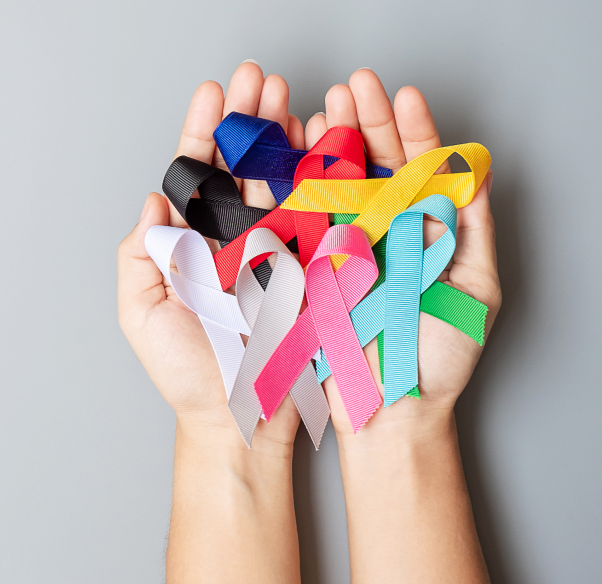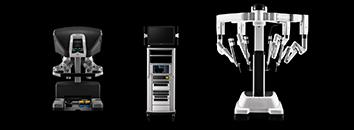Blood basics
Components
Blood is a specialized tissue in the body which occupies 7-8% of the body weight consisting of four major components namely red cells, white cells, platelets, and plasma.
Bone marrow is the soft substance present in the centre of the bones. Most of the blood cells develop from stem cells (specialized cells from which other cells develop).
Red cells: Also called erythrocytes carry oxygen to various tissues in the body.
White blood cells: Also called leucocytes, they form part of the body’s immune system to fight infection. Various types of white blood cells include T lymphocytes (cells that can attack foreign cells, infected cells and cancer cells) B lymphocytes (cells that produce antibodies which are proteins that bind to foreign substances and help to eradicate them), Neutrophils (cells that can ingest foreign cells), Monocytes (cells that ingest dead organisms and help to fight infection), Eosinophils (cells that can kill parasites, eliminate cancer cells and involved in allergic responses) and Basophils (cells that participate in allergic responses)
Platelets: Also called thrombocytes, they help in the clotting of the blood and control bleeding.
Generally, most of these cells mature in the bone marrow and are then released into the vessels of the blood.
Understanding leukaemia
The word leukaemia is derived from two Greek words “leukos” meaning white and “haima” meaning blood. Leukemia is the cancer (abnormal growth of cells) of the tissue in the bone marrow responsible for the formation of blood cells.
Contrary to other cancers, leukaemia does not produce tumours (abnormal mass of tissue) but results in abnormal production of white blood cells.
Though most of the time leukaemia is considered a disease of children, it affects adults too and the incidence increases with age. Men are more affected by leukaemia than women and Caucasians are more prone to leukaemia than African Americans.
Leukemia prognosis
Nearly 90% of the children diagnosed with acute lymphoid leukaemia (ALL) attain remission and more than 50% are cured completely. The 5-year survival rate which was only 4% in the 1960s had risen to 50% by the 1990s.
The remission rates of adult patients with ALL are from 80% to 90% and among those who survive, 40% have the survival chance for another 5 years.
Among the adult patients treated for AML, 60% to 70% have the chance of remission and among the survivors, 20% have the chance to live at least for another 3 years more with complete recovery.
The last word
Leukaemia is not a death sentence. Baseball legend Mr. Kareem Abdul-Jaffar is the living example that one can prevail and continue a meaningful life. So do not lose your heart. Fight.
Leukaemia symptoms
Symptoms of leukaemia vary depending on the type of leukaemia and the organ that is affected. People with chronic leukaemia may not exhibit any symptoms in the early stages of the disease.
Patients suffering from acute leukaemia may consult a doctor because they may be feeling sick. one of the common symptoms include:
- Swelling of the lymph gland in the armpit or neck
- Sweating in the night accompanied by chills.
- Recurrent infections
- Fatigue, tiredness or feeling of weakness
- Red spots under the skin or purple patches on the skin and swollen gums with bleeding
- Swelling of the liver or spleen causing discomfort
- Loss of weight for unknown reasons
- Joint pains or pain in the bones
Very often these symptoms are mistaken for infection or other health problems. Only doctors can find out the real cause. Hence, if you have any of these symptoms, you need to see your doctor for proper diagnosis.
Leukaemia causes
The exact cause of leukaemia is unknown. Leukaemia seems to develop from genetic and environmental factors.
Leukaemia occurs when the molecule containing genetic information (DNA) in the cells of the bone marrow gets damaged causing them to multiply abnormally. The cells that develop from these cells have mutated (changed) genetic information that makes them function abnormally.
As leukemia progresses, these abnormal cells overcrowd the normal cells causing various symptoms.
Doctors also cannot give you the reasons why some people get cancer and others do not. However, research studies show that some of the risk factors that may lead to leukaemia include exposure to radiation, tobacco smoking, exposure to chemical benzene, chemotherapy, genetically inherited diseases such as Down syndrome, certain blood disorders, viral infections such as HTLV-I (Human T-cell leukaemia virus type I), and a family history of leukaemia.
Types of leukaemia
Based on the speed at which the disease develops and worsens, leukaemia is divided into two main groups. Chronic leukaemia develops and worsens slowly over some time and acute leukaemia develops and worsens quickly.
Leukaemia is also grouped based on the type of cell that is affected. Leukaemia that affects lymphoid cells is called lymphoid and is termed lymphocytic or lymphoblastic leukaemia. Leukaemia that affects myeloid cells is called myeloid, termed myeloid or myeloblastic leukaemia.
Leukemia is categorized into four common types:
Chronic lymphocytic leukaemia (CLL): CLL is a lymphoid leukaemia affecting lymphoid cells and generally grows slowly. Every year more than 15,000 new cases of lymphoid leukaemia are diagnosed and affects mostly the elderly above the age of 55. Children are not affected.
Chronic myeloid leukaemia (CML): CML affects adults and progresses slowly at first. 5,000 new cases of CML are diagnosed every year.
Acute lymphocytic (lymphoblastic) leukaemia (ALL): ALL grows quickly affecting lymphoid cells. Though it affects adults, it is the most common type of leukaemia found in children. Each year, it accounts for more than 5,000 new cases of leukaemia.
Acute myeloid leukaemia (AML): AML occurs in both adults and children and grows quickly affecting myeloid cells. Every year more than 13,000 new cases of leukemia are diagnosed.
Treatment of leukaemia
Treatment of leukaemia depends on your age, type of leukaemia, your overall health and whether the leukaemia has spread to the other parts of your body or not.
You may not need any immediate treatment if you have chronic leukaemia without any symptoms.
During this period, your doctor watches you closely so that any necessary treatment can start immediately as soon as you have the symptoms of chronic leukaemia. When you are under watchful waiting for treatment, you will not receive any specific treatment right away.
Using medicines to kill the cancer cells is called chemotherapy. These drugs are given either in oral form or in injectable form.
Sometimes if required a combination of drugs may be used. Specific targeted therapy uses medications that exploit certain vulnerabilities in the leukaemia cells. For example, the drug imatinib stops the action of a protein within the leukaemia cells of people with chronic myelogenous leukaemia. These drugs may block the action of certain proteins in the leukaemia cells that cause their proliferation.
Another treatment called biological therapy involves medications that are given to help your immune system recognize these cancer cells and launch attacks on them so that they can be eliminated. Sometimes, these biological products carry toxins that can kill the leukaemia cells. Some of the biological can slow down the growth of leukaemia cells.
Radiation is also a treatment modality. High energy beams such as X-rays, are targeted against specific leukemia cells where they are concentrated or against specific organs where these leukemia cells are found. Though the side effects of radiation therapy are quite stressful or painful, these can be controlled through available treatments.
Replacement of your diseased stem cells with new healthy stem cells is called stem cell transplant. First, you will be subjected to either radiation or chemotherapy or both to kill the malignant leukaemia cells and then replace them with fresh, new and healthy stem cells which will give rise to healthy blood cells.
These healthy stem cells are given by transfusion and are similar to bone marrow transplants. The healthy stem cells can be from your own body or a family member or your twin or they could be donated.
Diagnosis of leukaemia
Most often, doctors accidentally find leukaemia in routine blood tests. Subsequently, your doctor may enquire about your medical and family history.
Your physician may perform a physical examination to check for swollen glands in the neck and in the armpit.
Blood tests are performed to check for any abnormal presence of the blood cells such as leucocytes, erythrocytes and platelets.
Your doctor may order a sample of the bone marrow during which your bone marrow cells shall be removed either from your hip bone or any other large bone through a needle under local anaesthesia (causing temporary loss of feeling through the medication at a specific place)
Further tests may be necessary to confirm the type and stage of leukaemia. These include:
Study of chromosomes (part of the cell that contains genetic information): From the blood or bone marrow samples, your chromosomes are studied to check whether there are any abnormalities in your chromosomes. This can also identify the type of leukaemia you have.
Spinal tap: A sample of the fluid surrounding your brain and spinal cord is taken with the help of a long and thin needle to check for leukaemia cells.
Chest X-ray: An X-ray of your chest is taken to check for swollen lymph glands in your neck and armpits and any other signs of disease.
Side effects
The side effects of leukaemia treatment result from the possible damage to healthy cells, tissues and organs. The side effects also vary depending on the type of treatment. They also can vary from person to person and even from session to session.
The side effects of chemotherapy and biological therapy depend on the drugs used and in general affect the cells that divide rapidly.
When blood cells are affected, patients are more prone to infections and may feel very weak and tired.
As the chemotherapy affects cells in the hair roots, one may experience hair loss. Once the therapy is stopped the hair may re-grow but the texture and colour of the hair may not be the same. Some anti-cancer drugs may affect the fertility of the patients.
Radiation therapy may cause the patient to be very tired. The skin where the radiation therapy is given may become tender, red and dry. If given along with chemotherapy the side effects may worsen.
Side effects of stem cell transplant include severe infections, bleeding and other side effects associated with chemotherapy and radiation therapy as the patients might have received these therapies before stem cell transplant. Besides the patient may experience Graft- versus-host-disease (GVHD) which can be mild or severe. The donor’s stem cells react with the host’s tissues affecting the liver, skin or digestive tract.
The doctor called and said, “You need to go see a specialist. Your white blood cell count is sky high”. For the last few days Mr. Jabbar was having night sweats and hot flashes. He wanted to get to the root of the situation, so he went to his family physician. The doctor examined his neck, arm pits, and abdomen, and took samples of his blood for analysis.
The person was no other than the famous basketball hall of fame and legend Mr. Kareem Abdul-Jabbar. Later he was diagnosed with chronic myeloid leukemia, a rare cancer of blood and bone marrow. It was December, 2008. Mr. Jabbar thought it was a death sentence. But he never lost hope and fought. He is now the spokesman for Novartis Pharmaceuticals Corp. living with leukemia, and the prognosis is positive. He is hopeful to prevail against the disease.














